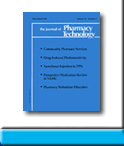 |
 |
ONCE-WEEKLY INTRAVENOUS
ADMINISTRATION OF RECOMBINANT HUMAN ERYTHROPOIETIN FOR ANEMIA FOLLOWING
HEMATOPOIETIC STEM CELL TRANSPLANTATION
Syed FA
Bilgrami, Bilal H Naqvi, Judee M Fox, Fiona M Furlong,
and Jonathan M
Clive
To request full article click here.
OBJECTIVE: To determine the response to once-weekly intravenous administration of recombinant human erythropoietin (rHuEPO) in individuals who develop severe anemia following hematopoietic stem cell transplantation (HSCT).
DESIGN: A serum erythropoietin (EPO) concentration was obtained by chemiluminescence immunoassay in recipients of allogeneic or autologous stem cell transplantation who had developed severe anemia (hemoglobin <8.5 g/dL). If the erythropoietin concentration was not as high as predicted for the degree of anemia, rHuEPO was initiated at a dosage of 40,000 units intravenously once weekly. The medication was administered through a permanent indwelling central venous catheter on an outpatient basis. Hemoglobin concentration was measured at least weekly for up to 12 weeks prior to the administration of rHuEPO, and for an equivalent period following the initiation of therapy. Packed red blood cells were transfused for a hemoglobin concentration <8.5 g/dL. The mean weekly transfusion requirements prior to and following the initiation of rHuEPO were compared.
RESULTS: Ten consecutive patients who developed severe anemia after allogeneic (n = 8) or autologous (n = 2) HSCT for a variety of hematologic malignancies were eligible for the study. The median age was 43.5 years, and the male to female ratio was 3:7. There was no evidence of renal failure, iron or vitamin deficiency, hemoglobinopathy, or active blood loss. The median EPO concentration was 102 mU/mL. rHuEPO was begun at a median of 41 days following stem cell infusion. Patients received a median dose of 580 units/kg/wk. Two patients developed severe intestinal hemorrhage as a result of acute graft-versus-host disease. The remaining eight individuals received their last transfusion of packed red blood cells a median of 27 days after the initiation of rHuEPO therapy. The mean weekly transfusion requirement prior to and following the commencement of rHuEPO therapy was 0.93 and 0.40, respectively. This difference was statistically significant (p = 0.024).
CONCLUSIONS: rHuEPO 40,000 units intravenously once weekly may reduce packed red blood cell transfusion requirements in some patients who develop severe anemia after HSCT. However, its use should be limited to individuals who are either intolerant of, or unwilling to use, the subcutaneous route of administration.
J Pharm Technol 2001;17:56-60.
To request full article click here.
|
|
|
||
|

